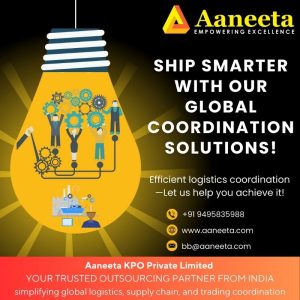In today’s interconnected world, global logistics serves as the lifeline of international trade and commerce. From moving raw materials to delivering finished goods, the logistics industry is the critical framework that supports the global economy. Yet, with increasing complexities—ranging from regulatory challenges and geopolitical uncertainties to supply chain disruptions—businesses are under constant pressure to streamline their operations while maintaining cost efficiency.
The Evolving Landscape of Global Logistics
The global logistics market, valued at over $9 trillion, is projected to grow steadily as trade volumes increase and e-commerce continues to thrive. However, the industry’s evolution brings a unique set of challenges:
Supply Chain Complexity: Multimodal transportation, cross-border regulations, and documentation intricacies create bottlenecks.
Rising Costs: Escalating fuel prices, labour shortages, and inflation are driving up operational costs.
Technology Integration: Businesses are expected to integrate advanced technology like IoT, blockchain, and AI to improve tracking, transparency, and efficiency.
Sustainability Pressures: Consumers and governments alike are emphasizing greener logistics practices, further complicating existing workflows.
The Critical Role of Streamlined Logistics
An efficient logistics network is the backbone of a successful supply chain, directly impacting delivery timelines, customer satisfaction, and cost management. As the world grows more interconnected, companies require a logistics framework that minimizes disruptions and maximizes efficiency across borders. Improving supply chain efficiency is vital for staying competitive in the rapidly evolving logistics landscape.
Key Strategies for Supply Chain Optimization
Adoption of Advanced Technology:
Leveraging tools like integrated warehouse management systems, AI-driven analytics, and real-time tracking software can streamline processes and improve decision-making. Technologies such as automation and IoT can significantly enhance efficiency by reducing manual errors and providing actionable insights.
Reducing Lead Times:
Streamlining supply chain lead time is crucial. This includes using domestic suppliers to minimize shipping delays, increasing order frequency, and adopting standard components for faster manufacturing. Consolidating suppliers can also reduce complexities in the supply chain
Emphasizing Collaboration:
Enhancing coordination across different supply chain segments—suppliers, logistics partners, and internal teams—ensures smoother operations. For instance, accurate sales forecasts and transparent communication can align production schedules with market demands.
Implementing 3PL Services:
Outsourcing logistics to third-party logistics (3PL) providers helps businesses scale operations effectively. These providers handle tasks like order fulfilment, inventory management, and transportation, enabling companies to focus on their core competencies.
Focus on Sustainability:
Adopting eco-friendly practices in supply chains not only supports environmental goals but also meets increasing customer demands for sustainable business practices. This includes optimizing routes, reducing waste, and using sustainable materials.
Leveraging Data for Forecasting:
Predictive analytics and data-driven insights allow businesses to anticipate market trends, adjust inventory levels, and plan for seasonal variations. This reduces overstocking and stockouts while ensuring better service
As globalization accelerates and consumer demands evolve, the logistics industry stands at the forefront of innovation and adaptation. With the global logistics market projected to grow significantly, businesses must address challenges such as rising operational costs, increasing supply chain complexity, and mounting sustainability pressures.
By adopting advanced technologies like IoT, blockchain, and AI, companies can enhance transparency, efficiency, and resilience. Additionally, reducing lead times, fostering collaboration across supply chain partners, and leveraging 3PL services are vital strategies to streamline operations and reduce disruptions. The growing emphasis on sustainable practices further underlines the importance of eco-friendly supply chain solutions, catering to both consumer expectations and regulatory requirements.
Ultimately, businesses that prioritize strategic investments in technology, sustainability, and collaboration will not only optimize their supply chains but also position themselves as leaders in a highly competitive market. In an interconnected world, a streamlined and efficient logistics network isn’t just an operational advantage—it’s a critical component for long-term success.



